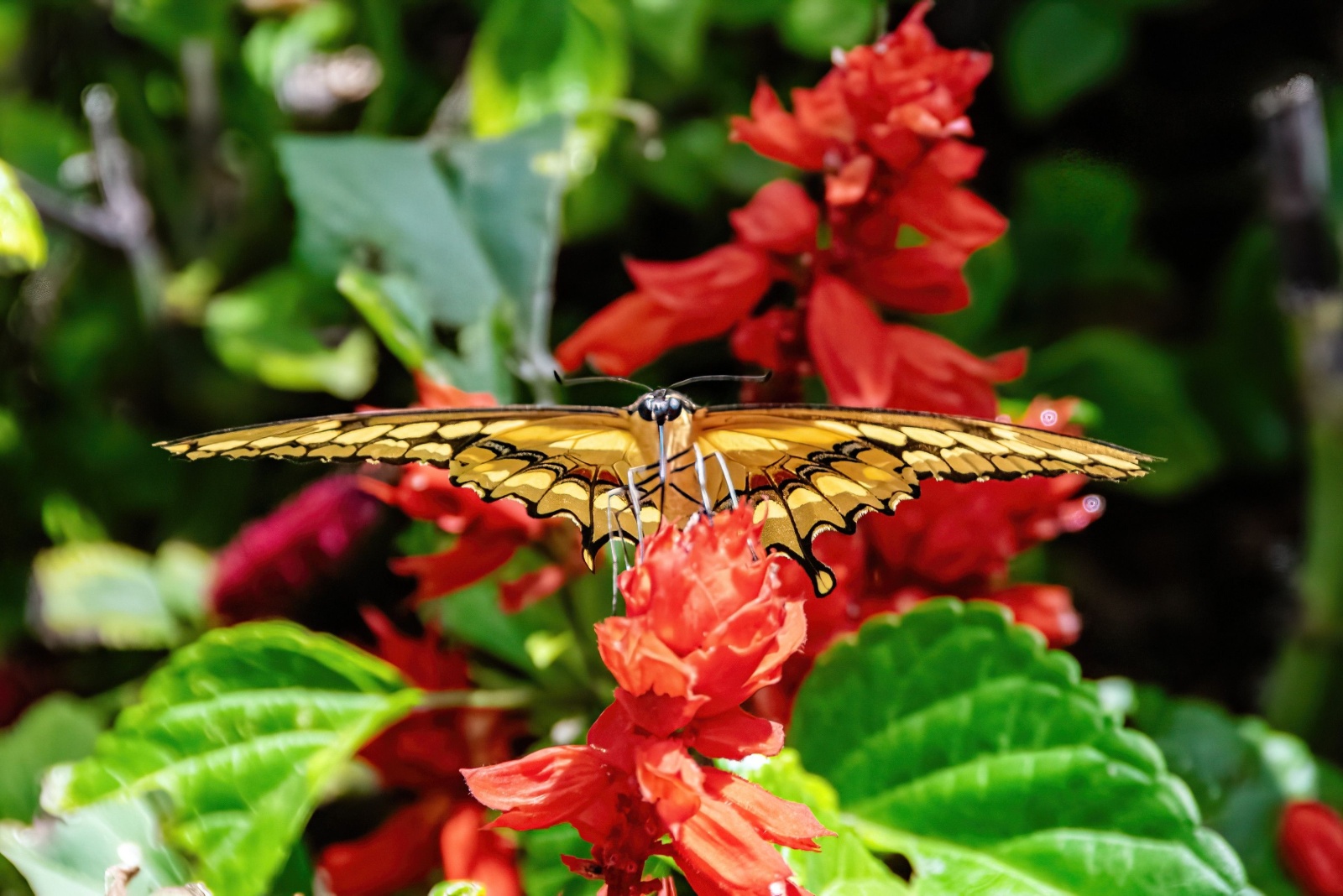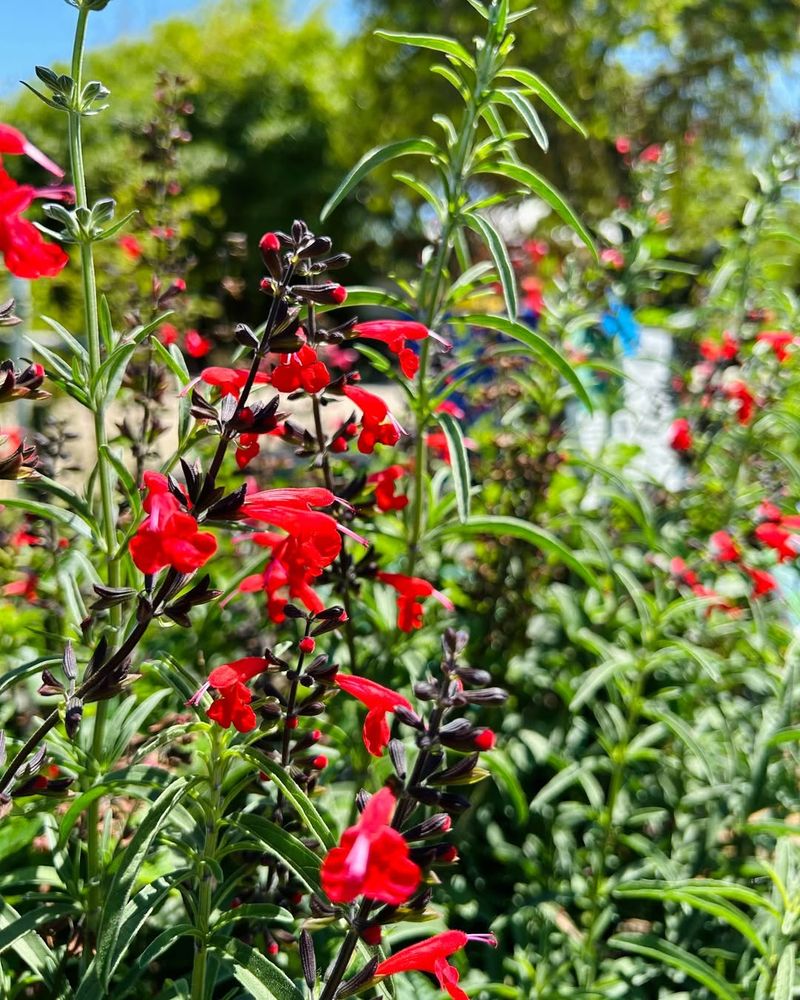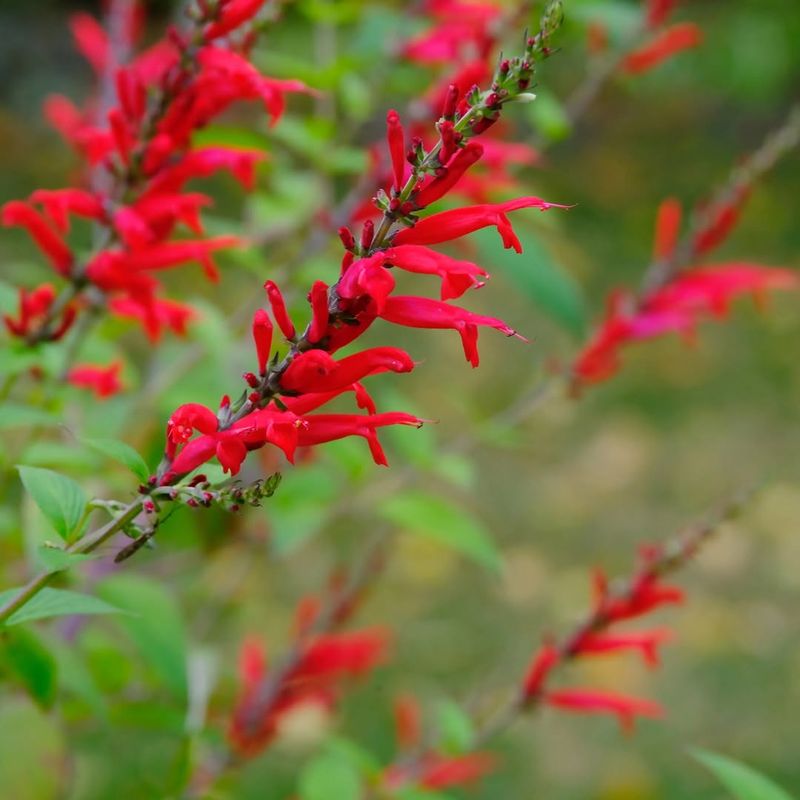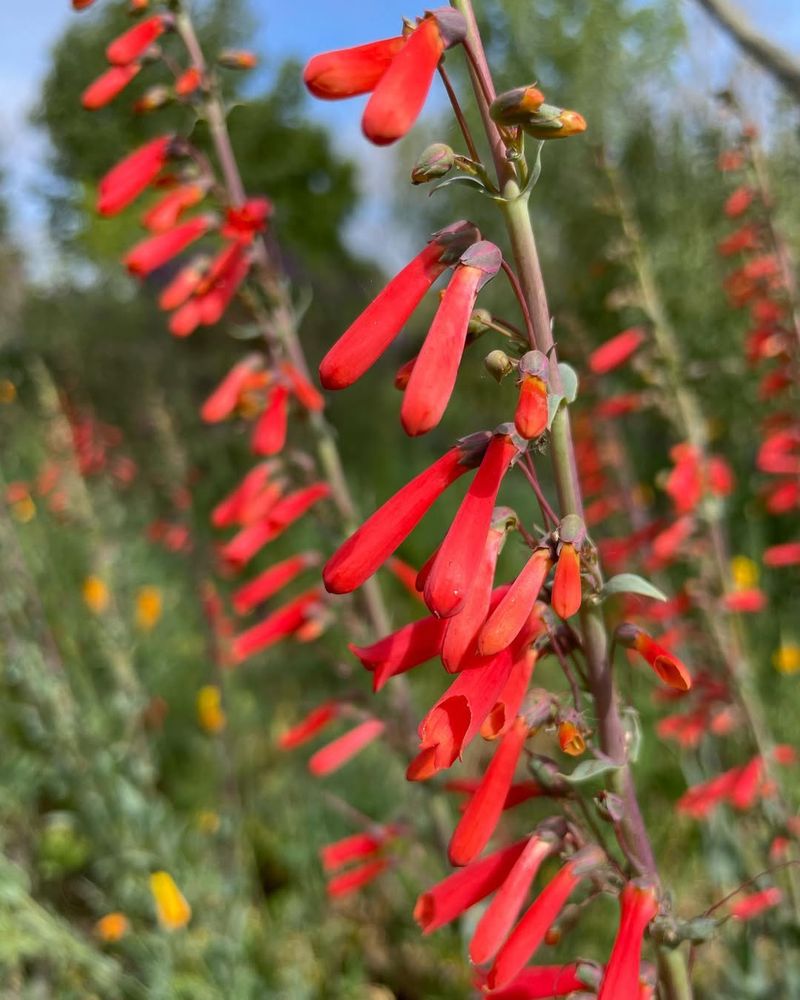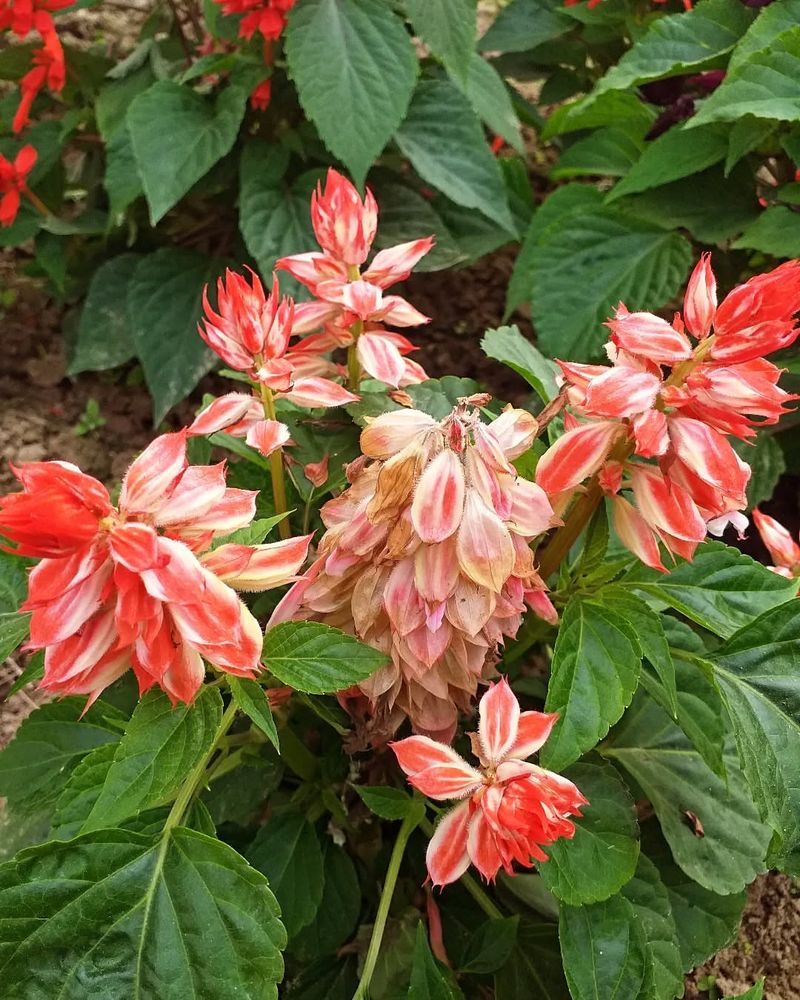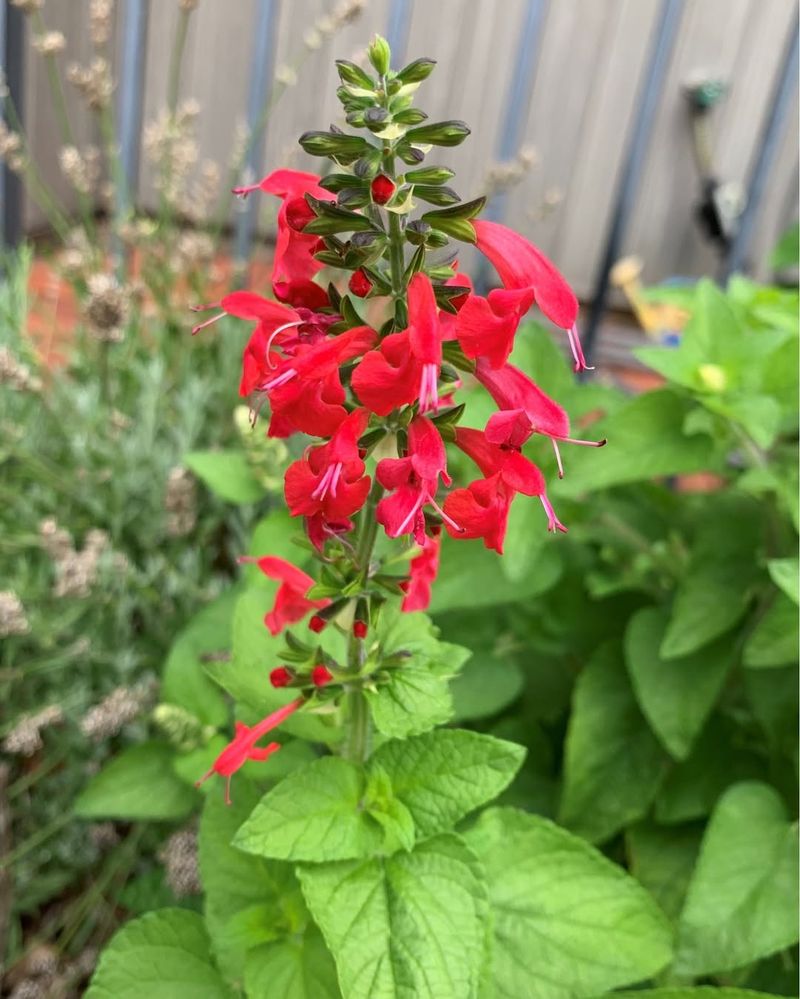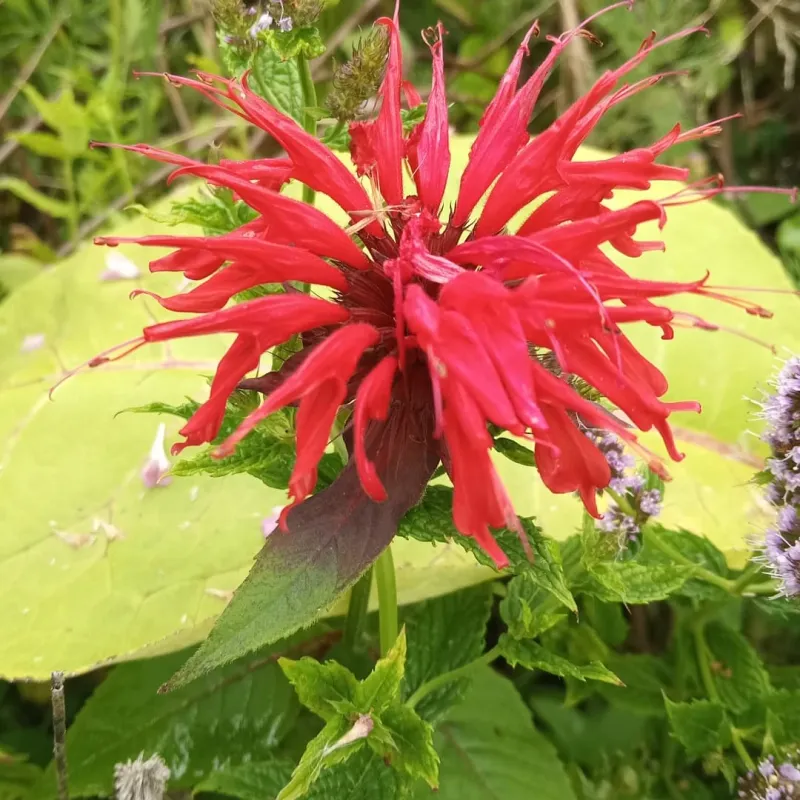Florida gardens are bursting with life this time of year—sunlight spilling over leaves, warm breezes stirring blooms, and wings of color fluttering through the air.
But among all the blossoms vying for attention, one native plant stands out as an irresistible magnet for butterflies. Hardy, radiant, and easy to grow, it’s nature’s own invitation to beauty on the wing: the scarlet sage.
1. Scarlet Sage Is A True Florida Native
Unlike many garden plants that come from other countries, scarlet sage actually belongs in Florida. It grows wild in natural areas throughout the state, from pine flatwoods to sandy scrublands.
Because it evolved here, scarlet sage handles Florida’s heat, humidity, and occasional droughts like a champion. Native plants also support local ecosystems better than imported species.
When you plant scarlet sage, you’re helping preserve Florida’s natural heritage while creating habitat for wildlife.
2. Butterflies Flock To Its Tubular Red Blooms
Those vibrant red tube-shaped flowers aren’t just pretty to look at—they’re like butterfly magnets. The long, narrow blooms are perfectly designed for butterflies to sip nectar with their specialized mouthparts.
Species like zebra longwings, gulf fritillaries, and swallowtails visit scarlet sage regularly throughout the blooming season. Hummingbirds love these flowers too, creating an exciting show in your garden.
The bright red color acts as a beacon that flying pollinators can spot from far away.
3. It Blooms During Peak Butterfly Season
Timing matters when attracting butterflies, and scarlet sage blooms exactly when these insects are most active. Peak flowering occurs during spring and fall, which coincides with major butterfly migration periods in Florida.
During these seasons, butterflies need plenty of nectar sources to fuel their journeys and reproduction. Scarlet sage provides reliable nutrition when butterflies need it most.
Some plants may even bloom year-round in warmer parts of the state, offering consistent food for resident butterfly populations.
4. Easy Care Makes It Perfect For Beginners
Worried you don’t have a green thumb? Scarlet sage forgives mistakes and thrives with minimal attention. Once established, it needs watering only during extended dry spells.
The plant tolerates Florida’s sandy soils and doesn’t require constant fertilizing or fussing. Pests rarely bother it, so you won’t need harsh chemicals in your butterfly garden.
Simply plant it in a sunny spot, water occasionally during the first few weeks, and watch it flourish with almost no effort required.
5. Multiple Species Grow Throughout The State
Florida actually has several native scarlet sage species, each with slightly different characteristics. Salvia coccinea is the most common, but other varieties also attract butterflies beautifully.
Some grow taller while others stay compact, giving you options for different garden spaces. All share those signature red flowers that pollinators adore.
Check with local native plant nurseries to find which species grows best in your specific region. North Florida gardens might prefer different varieties than South Florida landscapes do.
6. It Self-Seeds To Create Natural Colonies
One of scarlet sage’s best features is its ability to spread naturally without becoming invasive. After flowering, plants produce small seeds that drop nearby and sprout new plants the following season.
Over time, you’ll develop beautiful drifts of scarlet sage without buying more plants or doing extra work. These natural colonies create even bigger butterfly attractions.
If you want to control the spread, simply deadhead spent flowers before seeds mature, though most gardeners enjoy the free plants.

